 by "ttyymmnn" (ttyymmnn)
by "ttyymmnn" (ttyymmnn)
Published 09/05/2017 at 12:35
 by "ttyymmnn" (ttyymmnn)
by "ttyymmnn" (ttyymmnn)
Published 09/05/2017 at 12:35
Tags: Planelopnik
; planelopnik history
STARS: 7
Welcome to This Date in Aviation History , highlighting milestones, important historical events and people in aviation and spaceflight from September 2 through September 5.
!!! UNKNOWN CONTENT TYPE !!!
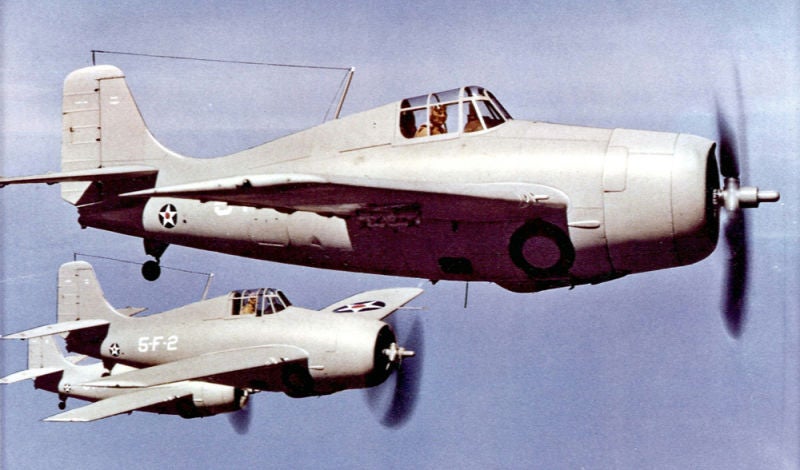
September 2, 1937 – The first flight of the Grumman F4F Wildcat. The Grumman Corporation has a rich history of building rugged fighter aircraft, a tradition that can be traced all the way back to the days before WWII. Their penchant for making reliable aircraft that could take a pounding and still bring their pilots home earned the company the nickname “Iron Works,” and the first aircraft to truly live up to that name was the F4F Wildcat. The Wildcat traces its lineage back to the first biplane fighter that Grumman produced for the Navy, the FF , which was notable as being the first carrier-based fighter to feature a retractable landing gear. Grumman continually developed their fighter, first with the F2F, then the F3F, and though both of those iterations were biplane fighters, the classic F4F fuselage began to take shape. Even while the F3F was undergoing flight testing, Grumman was looking ahead to their next fighter, another biplane, but by that time the Navy had made the decision to select a monoplane adopt with the Brewster F2A Buffalo . Still, the Navy placed an order for Grumman’s newest biplane, the G-16, in case the Buffalo didn’t fulfill their needs. The G-16, soon to be called the XF4F-1, turned out to be inferior to the Buffalo, so Grumman went back to the drawing board and adopted a monoplane design, giving their fighter new wings and tail and beefing up the power with a supercharged Pratt & Whitney R-1830 Twin Wasp radial engine. This aircraft was known as the XF4F-3, and the classic Wildcat was born.
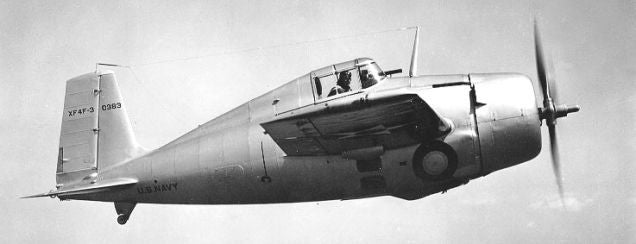
The US Navy and France placed orders for the new fighter, but when France fell to Germany in 1940, those aircraft were sent to England, where they were known as the Martlet. Though the Wildcat became an iconic weapon of the early Pacific War, it saw its first combat with the Royal Navy’s Fleet Air Arm. When war broke out in the Pacific in 1941, the Buffalo, which had been chosen over the Wildcat, proved to be nearly useless against modern Japanese fighters, and it was quickly withdrawn in favor of the Wildcat. While the Wildcat was still no match for the Japanese Mitsubishi A6M Zero head-to-head, it was still better than the woefully underperforming Buffalo. The Wildcat’s strong construction, armored cockpit, and self-sealing fuel tanks allowed it to absorb punishment from Japanese fighters and stay in the fight while bringing its pilots home, and special tactics, such as the Thach Weave , helped keep the Wildcat effective until the more powerful Grumman F6F Hellcat arrived in the Pacific in 1943. By the end of the war, and despite the Zero’s greater maneuverability, better climb rate, longer range, and effective tactics, the Wildcat—and her well-trained pilots—enjoyed an almost 7:1 kill ratio over the enemy. The Wildcat served the Navy and Marine Corps throughout the war and, with the arrival of the Hellcat, the Wildcat shifted operations to escort carriers that were too small for the larger fighters, where Wildcat pilots helped provide air cover for amphibious assaults. By the end of production in 1945, nearly 8,000 Wildcats had been built, and it was retired at the end of the war. (US Navy Photos)
!!! UNKNOWN CONTENT TYPE !!!
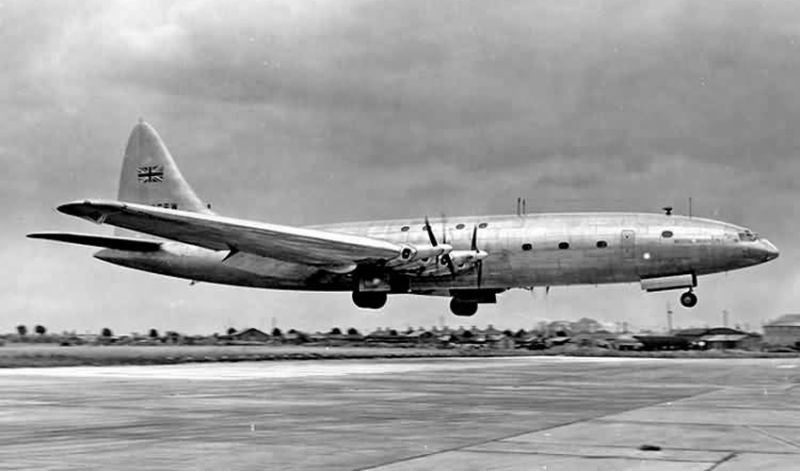
September 4, 1949 – The first flight of the Bristol Brabazon. History tends to remember the great planes, the ones that broke records, helped win wars, or made the world a smaller place. But oftentimes, aircraft that failed to enter widespread production can be as interesting as those that do. Planes like the Hughes H-4 Hercules , better known as the Spruce Goose , may not have been commercially viable, but their story is one that is worth telling, an example of thinking on a grand scale that was every bit as impressive as it was impractical. The enormous yet ultimately anachronistic Bristol Brabazon earned a place in this category. During WWII, the British government entered into an agreement with the United States whereby England would focus their efforts on the development of bombers and other military aircraft while depending on the US to provide them with transport aircraft. By the middle of the war, the British government faced the unfortunate situation of having no significant transport aircraft under development to fly passengers after the war. In fact, many of the first postwar British airliners were converted bombers such as the Avro Lancastrian , which was developed from the Avro Lancaster strategic bomber. In 1943, the Brabazon Committee , led by John Moore-Brabazon, 1st Baron Brabazon of Tara , was assembled to address the vacuum in British aircraft design left by the absence of passenger aircraft development. The committee set to work identifying and categorizing England’s postwar aviation needs, and the report filed by the committee settled on four different types of aircraft production. The biggest of the four was the Type I, a large, transatlantic airliner intended to serve the routes between London and New York, a 12-hour flight at the time. Bristol had already been working on a large “100 ton bomber,” one that found its closest parallel in the American Consolidated B-36 Peacemaker , but development was halted when such a large bomber was deemed unnecessary. So, when the call came for a large airliner, Bristol returned to the huge bomber and developed it into the Brabazon. The Brabazon featured four sets of counter-rotating propellers, but where many aircraft of this design used one engine to turn both propellers, the Brabazon used two. Thus, the Brabazon was powered by a total of eight Bristol Centaurus 18-cylinder engines, each providing over 3,000 horsepower. Cruising speed was 250 mph, and the range was 5,500 miles flying at 25,000 feet. The Brabazon was an enormous aircraft, almost as large as a modern Boeing 767 , and its size would lead one to believe it could carry hundreds of passengers. However, the Brabazon only accommodated 100 passengers. Instead of row upon row of seats, it had sleeping berths, a galley, a 32-seat dining cabin and a lounge with a bar.
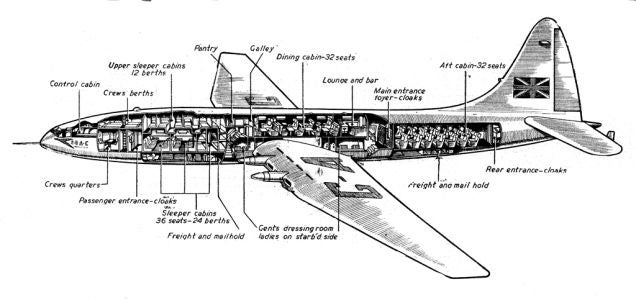
Bristol hoped that such an arrangement would appeal to big money travelers who could afford such accommodations. But carrying so few passengers in such grand style hearkened back more to transcontinental train travel than transatlantic passenger flight, and the arrangement was not appropriate for the burgeoning passenger market, where making money meant carrying more and more passengers. One protoype was constructed, but the airlines had no stomach for such a large, expensive airplane that carried so few passengers. After millions of pounds were spent in development, the Brabazon was canceled in 1953. While the Brabazon itself was deemed a failure, Bristol benefited from what it learned building the large airliner, knowledge that they put to use developing the more traditional (and more successful)
Bristol Britannia
, which first flew in 1952. And the British aviation industry as a whole benefited from the increase in manufacturing infrastructure and techonological development that went along with the Brabazon and the rest of the work of the Brabazon Committee. Following its cancellation, the single Brabazon was broken up for scrap, along with the second prototype, and the Brabazon, despite its size, was relegated to relative obscurity.
(Photo author unknown)
!!! UNKNOWN CONTENT TYPE !!!
!!! UNKNOWN CONTENT TYPE !!!
!!! UNKNOWN CONTENT TYPE !!!
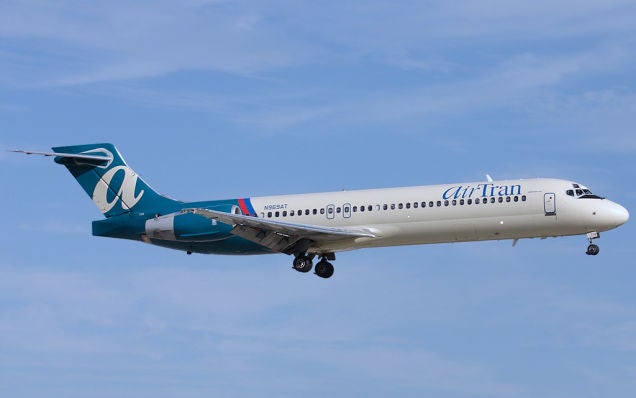
September 2, 1998 – The first flight of the Boeing 717, a twin-engine, narrow-body commercial airliner first developed by McDonnell Douglas as the MD-95, the final variant of the venerable Douglas DC-9 line. Following the merger of McDonnell Douglas and Boeing in 1997, the MD-95 was rebranded as the Boeing 717 (not to be confused with the earlier military version of the Boeing 367-80 that entered service as the C-135 Stratolifter ), and the 717 entered service in 1999 with AirTran Airways (formerly ValuJet Airlines ) as a medium-range airliner for the 100-seat market. When production ended in 2006, a total of 156 had been produced. (Photo by Airwim via Wikimedia Commons )
!!! UNKNOWN CONTENT TYPE !!!
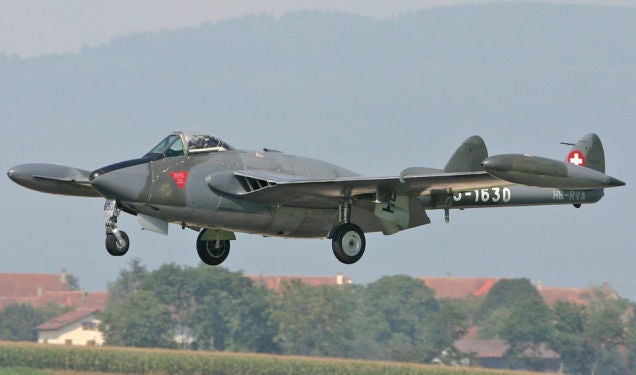
September 2, 1949 – The first flight of the de Havilland Venom,
a single-engine, turbojet-powered fighter-bomber developed from the
de Havilland Vampire
. The twin-tail boom configuration allowed for a shorter tailpipe behind the engine that took advantage of as much power as the early
de Havilland Ghost
turbojet could offer. Like the Vampire, the Venom was still built from a composite of wood and metal, but a thinner wing allowed greater speeds, while wingtip fuel tanks increased range. The Venom was introduced in 1952 and was the first British fighter to be fitted with an ejection seat. The Venom served the RAF until 1962, and with the Swiss Air Force until 1983.
(Photo by Hermann Keist via
Wikimedia Commons
)
!!! UNKNOWN CONTENT TYPE !!!
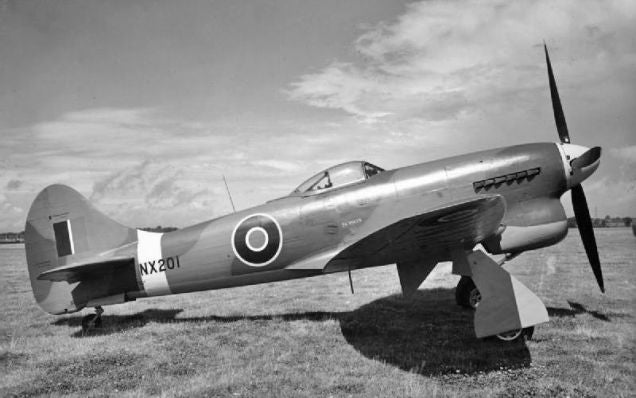
September 2, 1942 – The first flight of the Hawker Tempest,
an improved version of the
Hawker Typhoon
fighter-bomber. The Tempest benefited from a more powerful engine and a new
laminar flow wing
, and became a formidable attack aircraft. The Tempest was one of the most powerful fighters of the war, and possessed particularly good low-level performance. The Tempest was powered by a single
Napier Sabre
liquid-cooled 24-cylinder engine that developed around 3,000 hp, had a top speed of 432 mph, and was armed with four 20mm
Mark II Hispano
cannons and up to 1,000 pounds of bombs or rockets. Introduced in January 1944, just over 1,700 Tempests were produced, and it was retired following the war.
(RAF Photo)
!!! UNKNOWN CONTENT TYPE !!!
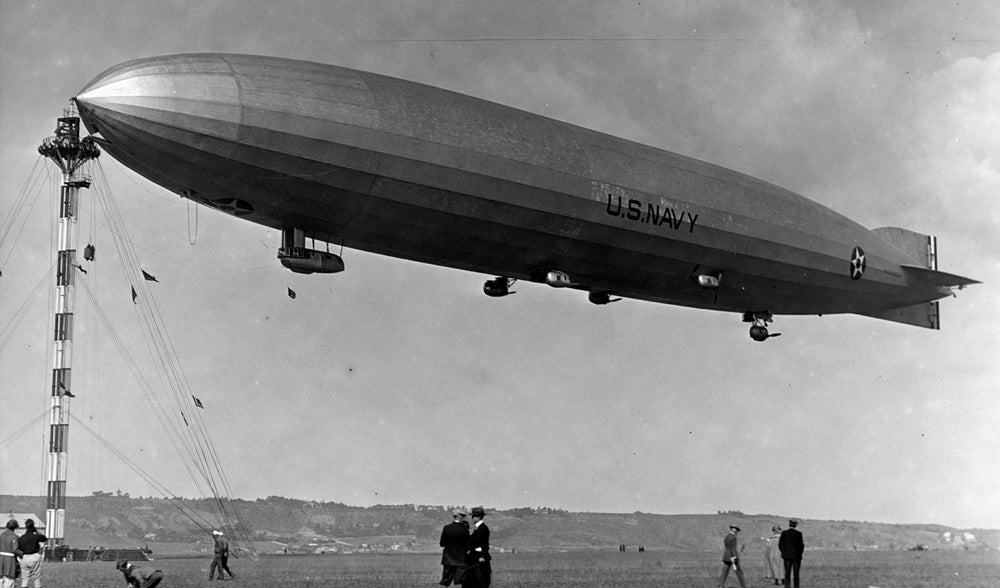
September 2, 1925 – The crash of the rigid airship USS Shenandoah . The USS Shenandoah (ZR-1) was the first of four rigid airships purchased by the US Navy. Shenandoah was based on the German Zeppelin LZ 96 and it was the first airship to be filled with helium rather than the more flammable hydrogen. Shenandoah took its maiden flight on September 4, 1923, and performed the first transcontinental flight in July 1924. On September 2, 1925, Shenandoah set out from Lakehurst, New Jersey for a promotional flight across the Midwest. While flying through a line of thunderstorms over Ohio, the airship was lifted above the pressure limits of its gas bags by a violent updraft and broke apart. Fourteen members of the 29-man crew were killed. Thousands of Ohioans came to view the crash site, and widespread looting of the hulk took place, with critical instruments stolen that could have helped with the investigation into the crash. Nevertheless, the crash led to changes in operating procedures, better weather forecasting, and the strengthening of future airships. (Photo via the Fred Wallace Special Collection)
!!! UNKNOWN CONTENT TYPE !!!
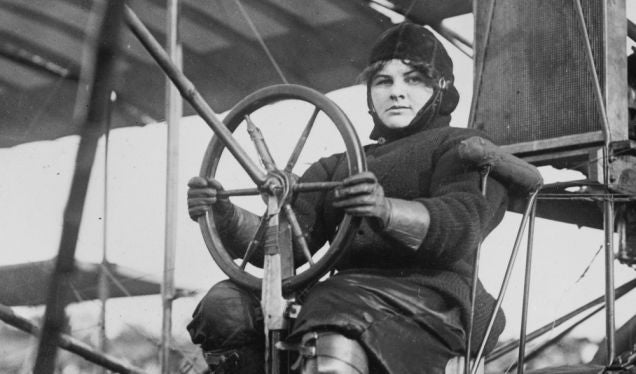
September 2, 1910 – Blanche Stuart Scott makes the first solo airplane flight by a woman in the United States. An adventurer at heart, Scott was the second woman to drive an automobile across the United States, and her notoriety led to an offer from Glenn Curtiss to give her flying lessons. Scott went on to become a professional pilot, making her debut as a member of the Curtiss exhibition team as the first woman to fly at a public event, earning her the nickname “Tomboy of the Air.” After gaining fame as a stunt pilot, Scott was the first American woman to make a long-distance flight of 60 miles, and also became a test pilot for Glenn Martin . She retired from flying in 1916 because she was upset by an American public that seemed obsessed with air crashes and the lack of opportunity for women pilots. (Library of Congress photo)
!!! UNKNOWN CONTENT TYPE !!!
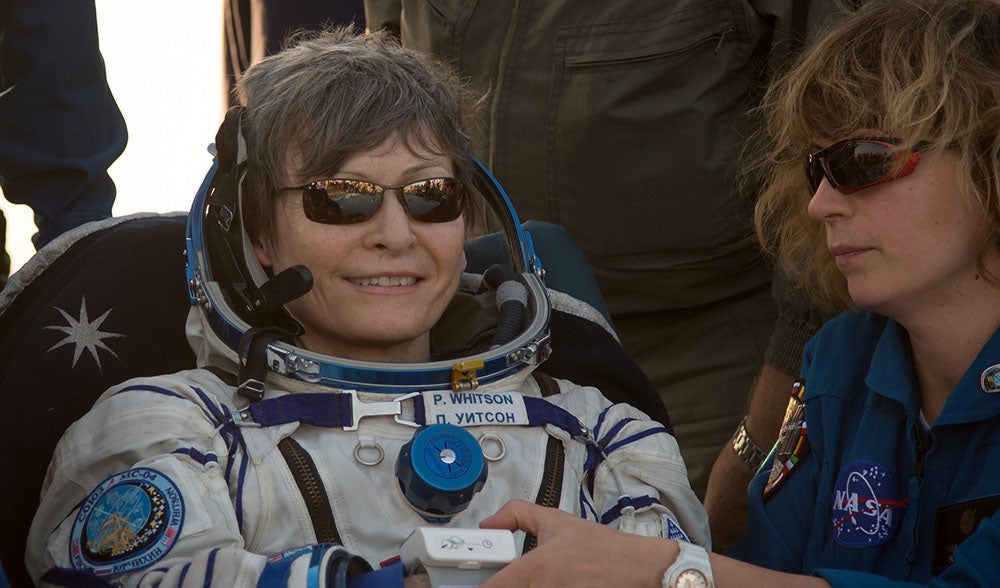
September 3, 2017 – Astronaut Peggy Whitson returns to Earth after setting an endurance record for American astronauts. With the culmination of her third long-duration mission aboard the International Space Station (ISS), Whitson broke astronaut Jeff Williams ’ previous record of 534 days of total time in space by logging a total of 665 days in space. Whitson made her first trip to the ISS in 2002, staying for 184 days, then returned in 2008 for a 191-day stay. On her third, record-breaking trip she spent 289 days in space. At age 57, she is the world’s oldest spacewoman and the first to command the ISS twice. She has spent more then 53 hours performing spacewalks, the most of any female astronaut. Whitson was appointed chief of the astronaut office in 2009, making her the first woman in the position which she held until 2012. The record for the longest single stay in space belongs to cosmonaut Valeri Polyakov , who spent 437 days on the Russian space station Mir . (NASA photo)
!!! UNKNOWN CONTENT TYPE !!!
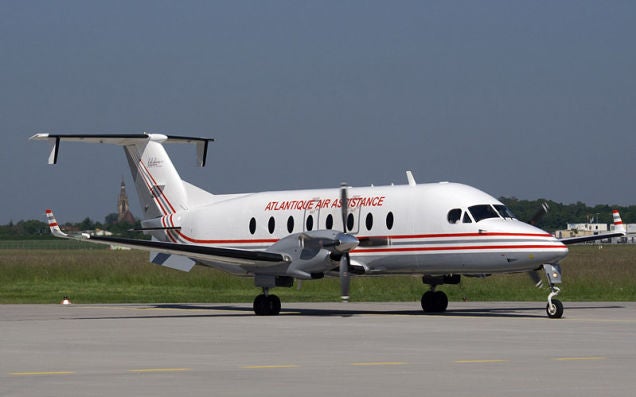
September 3, 1982 – The first flight of the Beechcraft 1900,
a 19-passenger twin-turboprop regional airliner and one of the most popular small airliners ever produced. The 1900 was developed from the
Beechcraft Super King Air
and was designed with all-weather flight capabilities, as well as the ability to operate from short runways. Power comes from a pair of
Pratt & Whitney Canada PT6
turboprops which give the 1900 a top speed of 518 mph. When production ended in 2002, Beechcraft had built nearly 700 aircraft, and it remains in service with over 80 civilian operators and numerous military operators, including the US Air Force, where it is known as the C-12J.
(Photo by Juergen Lehle, AlbSpotter.eu, via
Wikimedia Commons
)
!!! UNKNOWN CONTENT TYPE !!!

September 3, 1981 – The first flight of the British Aerospace 146,
a short-haul, regional airliner manufactured from 1978-2001 by British Aerospace. The 146 is powered by four
Textron Lycoming ALF 502
engines mounted on pods under a high cantilever wing, and has become very popular in use at city airports, where it takes advantage of its short-field performance and quiet operation. The 146 entered service in 1983 and can carry from 82-112 passengers. Nearly 400 copies of the 146 were produced, and it continues to serve worldwide as an airliner and cargo aircraft, including some that have been converted for aerial firefighting duties.
(Photo by Arpingstone via
Wikimedia Commons
)
!!! UNKNOWN CONTENT TYPE !!!
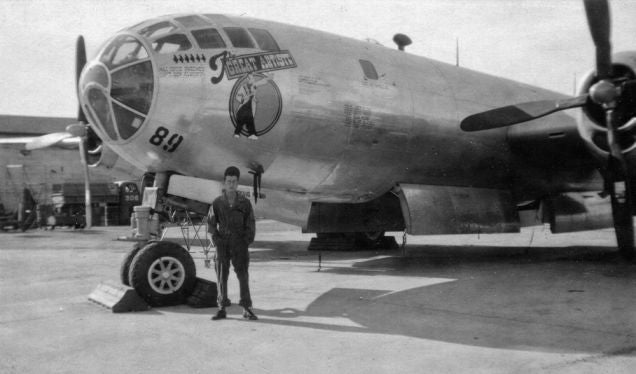
September 3, 1948 – The loss of Silverplate Boeing B-29 Superfortress
The Great Artiste
.
The two
Silverplate
Boeing B-29 Superfortresses
that dropped an atomic bomb on Hiroshima and Nagasaki, the
Enola Gay
and
Bockscar
, are well known to history. But they weren’t the only planes to make those historic flights. On each mission, they were accompanied by two other Silverplate B-29s, one with photographers and the other with measuring instruments.
The Great Artiste
(44-27353) was the only B-29 to fly on both atomic raids. Built at the Glenn L. Martin Plant,
The Great Artiste
flew conventional bombing missions before the nuclear raids of August 1945, but during a polar navigation training mission after the war it developed engine trouble after takeoff from Goose Bay, Labrador and overran the runway on landing and was seriously damaged. Despite its historical significance,
The Great Artiste
was scrapped in 1949.
(Photo author unknown)
!!! UNKNOWN CONTENT TYPE !!!
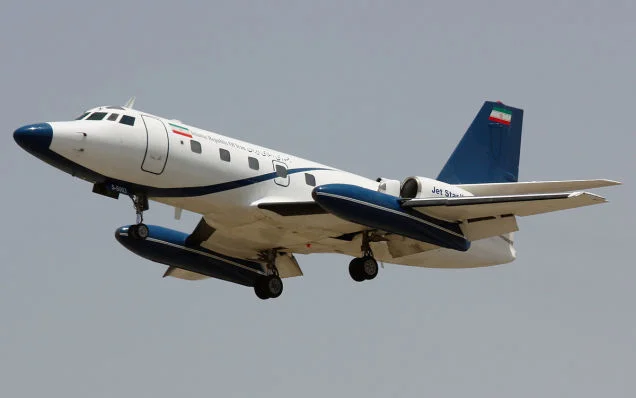
September 4, 1957 – The first flight of the Lockheed JetStar,
the first dedicated business jet to enter service and, with accommodations for up to ten passengers, the largest in its class. Unlike most
bizjets
of the era, the JetStar had four engines rather than two. Originally powered by four
Pratt & Whitney JT12
turbojets, later production aircraft received quieter, more fuel-efficient
Garrett TFE731
turbofan engines that gave it a top speed of 547 mph. Not only did it serve as
Kelly Johnson’s
personal jet, the JetStar entered US military service as the C-140 and also served as President
Lyndon Johnson’s
personal aircraft, which he nicknamed
Air Force One-Half
. Just over 200 were produced from 1957-1978.
(Photo by Shahram Sharifi via
Wikimedia Commons
)
!!! UNKNOWN CONTENT TYPE !!!
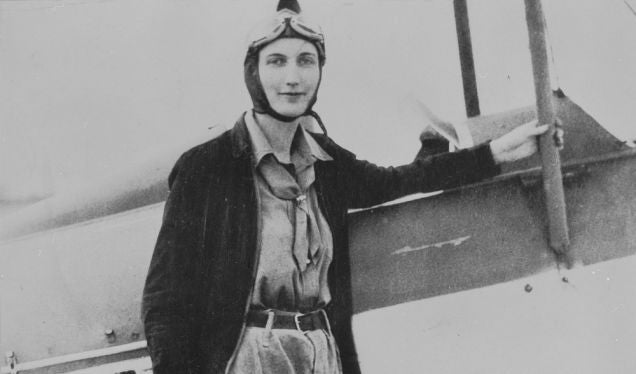
September 4-5, 1936 – Beryl Markham becomes the first woman to make a solo crossing of the Atlantic Ocean from east to west.
Born in England,
Markham
became one of the first African bush pilots, flying as a game spotter for hunters on safari. Her transatlantic crossing was planned from Dublin to New York City, but poor weather forced her down in New Brunswick, Canada. Still, she completed the crossing, which is more difficult than going eastward since the pilot has to fly against the prevailing winds. Markham’s memoir
West with the Night
chronicles this flight, as well as other flying adventures she undertook. Markham died in 1986 at age 83.
(Photo author unknown)
!!! UNKNOWN CONTENT TYPE !!!
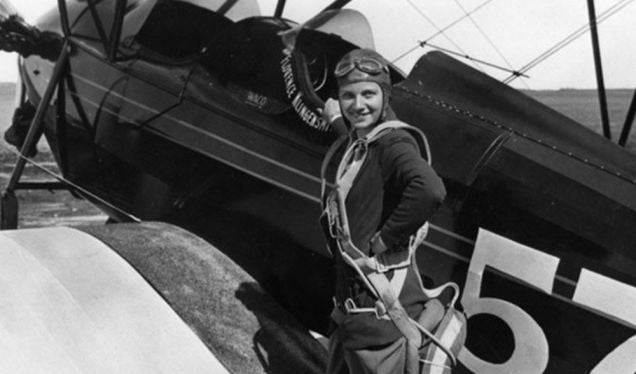
September 4, 1933 – The death of Florence Gunderson Klingensmith,
an American aviatrix active during the Golden Age of Aviation and one of the first to participate in air races with male pilots. Klingensmith became interested in aviation after
Charles Lindbergh
visited her hometown of Fargo, North Dakota, and she began her flying career as a skydiver in exchange for flying lessons. She acquired her first airplane by going door to door to solicit funds, and in 1931 she set a world record by completing 1,078 loops. Taking up air racing, she was the first woman to enter the Frank Phillips Trophy Race in 1933 flying a
Gee Bee Model Y Senior Sportster
. While flying in fourth place at over 200 mph, the airplane began to disintegrate, and Klingensmith was killed while attempting to bail out. Her death led to a ban on women participating in air races. Klingensmith was 29 years old.
(Photo author unknown)
!!! UNKNOWN CONTENT TYPE !!!
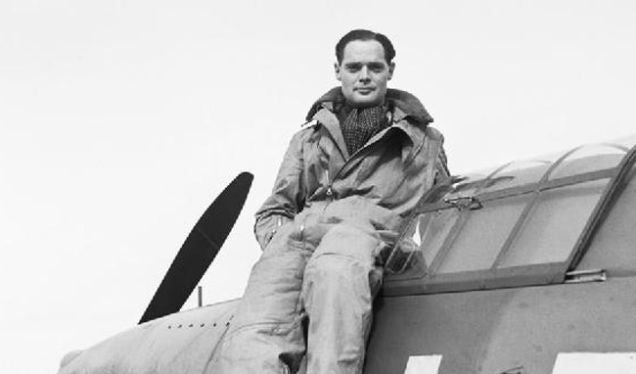
September 5, 1982 – The death of Douglas Bader,
an RAF fighter ace during WWII who was credited with 22 confirmed kills, four shared victories and 11 damaged enemy aircraft. In 1931, Bader lost both legs in an aerobatic crash, but after his recovery he rejoined the RAF after the start of WWII. Bader scored victories in the skies over
Dunkirk
and later took part in the
Battle of Britain
. In August of 1941, Bader bailed out of his stricken fighter over France and was captured, but despite of his disability, he made so many escape attempts that his jailers threatened to confiscate his prosthetic legs. He was then held at
Colditz Castle
, where he remained imprisoned until the end of the war. Following the war, Bader continued flying until poor health forced him to quit in 1979. For his war service, Bader was awarded the
Order of the British Empire
, the
Distinguished Service Order
and
Distinguished Flying Cross
.
(Imperial War Museum photo)
!!! UNKNOWN CONTENT TYPE !!!
!!! UNKNOWN CONTENT TYPE !!!
!!! UNKNOWN CONTENT TYPE !!!
!!! UNKNOWN CONTENT TYPE !!!
!!! UNKNOWN CONTENT TYPE !!!
!!! UNKNOWN CONTENT TYPE !!!
!!! UNKNOWN CONTENT TYPE !!!
If you enjoy these Aviation History posts, please let me know in the comments. And if you missed any of the past articles, you can find them all at Planelopnik History . You can also find more stories about aviation and aviators at Wingspan and Planes You’ve (Probably) Never Heard Of .
!!! UNKNOWN CONTENT TYPE !!!
 "For Sweden" (rallybeetle)
"For Sweden" (rallybeetle)
09/05/2017 at 12:52, STARS: 2
The Wildcat is thicc
 "Rock Bottom" (rockbottom81)
"Rock Bottom" (rockbottom81)
09/05/2017 at 13:50, STARS: 0
Dat Gee Bee tho
